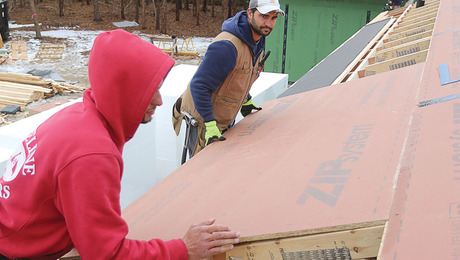A friend of mine is thinking about selling the house he bought last spring because he has super high heating bills. Turns out this house (20 years old) was built with radiant heat in the ceilings (ranch). It seems obvious to me why his heat bills are so high, he’s heating the attic! Was this a common way to do radiant heat in the 80’s?
You get out of life what you put into it……minus taxes.
Marv















Replies
More popular in the 70's. The electric companies pushed it like crazy around here by offering cheaper electric to the new users. Most people who have it seem to like its feel, but not so much the cost of operation.
Lots of ceiling insulation helps.
How much has this guy got ?
carpenter in transition
Wouldn't insulating the attic be easier than selling up and moving?
Radiant ceiling and wall heat comes in a very distant second to radiant floor heat in terms of the number of installations. All three work, but they are different animals.
Electric radiant? Not a wise choice unless you own a hydroelectric plant. At least not in New England.
And yeah, I'd venture that additional, or better, insulation in the attic would improve things quite a bit.
As others have said, electric radiant ceiling heat is much different than hydronic radiant floor heat which usually is heated by natural gas but could be propane or fuel oil.
Electric rates have gone up faster than fossil fuels because 1) they come from fossil fuels, 2) we keep using more electricity, and 3) places that used to have an excess like the NW have less of a surplus and/or ship the electrons elsewhere.
And while the strictly radiant component of ceiling heat is nice, the conductive aspects suck. The hottest air is at the very top of the of the room where it does you no good. It only increasing the delta T across the ceiling and increases losses to the attic.
If he is not attached to the house, selling may make more financial sense than retrofitting. A buyer won't discount the house nearly enough (if at all) for such a ridiculous heating system. Whereas a retrofit would involve a heat source (boiler or furnace) and distribution (pipes or ducts). Maybe worth a quick bid and then compare to realtor selling costs.
This is hot water radiant heat in the ceiling. I haven't been up there to check the insulation. I suggested he should run new pex in main floor joist space to make the system more efficient.You get out of life what you put into it......minus taxes.
Marv
Hot water in the ceiling. Then you've got the boiler, manifold, pumps, etc already. "Just" need to run PEX in the floor and connect.
But he's got high bills despite the use of non-electric heat?
The big return for this money would be insulate the bejebbers out or the ceiling.
Yes, RFH would allow lower temps on average, a much lower delta T across the ceiling and eliminate cold spots down low. But how to install it? Pour gypcrete? Rip out the basment ceiling and do staple-up? Anything is doable. But a lot of them are prohibitive, especially as a retrofit.
If it was really 70's instead of 80's, there might not be much insulation, certainly not modern standards. Check that first.David Thomas Overlooking Cook Inlet in Kenai, Alaska
In addition to adding insulation to the ceiling he could possible add some baseboard units.Not as the main heat source but enough to warm up the floor area. Lot simpler that trying to retro fit floor radaint and since it is sumpliment it won't be that expensice.
An interesting sidebar,the co. I work for gets alot of work in the Kaiser Buildings in Oakland and the entire dropped ceiling is a grid of copper pipe 12"o.c. with acoustic tile w/ clips that connect to the copper.It is a real chalenge when any overhead work is done,those pipes are HOT!Not sure when it was built,maybe early sixties,about 12 stories tall. Mike